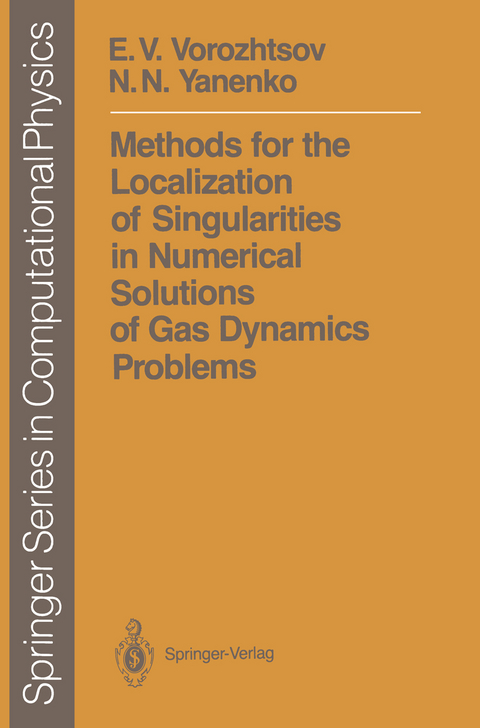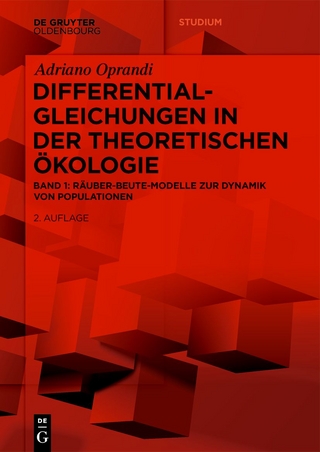
Methods for the Localization of Singularities in Numerical Solutions of Gas Dynamics Problems
Springer Berlin (Verlag)
978-3-642-64770-3 (ISBN)
1. Introduction and Necessary Notions from the Theory of Difference Schemes for Gas Dynamics Problems.- 1.1. Original Equations. Jump Conditions in the Case of One-Dimensional Gas Flow.- 1.2. Jump Conditions in the Case of Two-Dimensional Gas Flow.- 1.3. Homogeneous Difference Schemes and Their Differential Approximations.- 1.4. On the Applicability of Progressive Wave-Type Solutions of the First Differential Approximation Equations.- 2. Differential Analyzers of Shock Waves in One-Dimensional Gas Flows.- 2.1. An Introductory Example.- 2.2. Existence and Uniqueness of the Smeared Wave Center in the Solution of the System with Artificial Viscosity.- 2.3. Scheme Viscosity and Smeared Shock Wave Center Existence.- 2.4. An Analysis of Difference Schemes of Gas Dynamics.- 2.5. The Application of Differential Analyzers in Problems of Shock Wave Formation.- 3. Differential Analyzers of Shock Waves in Two-Dimensional Gas Dynamic Computations.- 3.1. Method for Investigating the Properties of Curvilinear Shock Front "Smearing".- 3.2. Localization of the Smeared Shock Wave Center in the Case of a Straight Front.- 3.3. Shock Localization by Moving Grids.- 3.4. Computational Examples.- 4. Differential Analyzers of Contact Discontinuities in One-Dimensional Gas Flows.- 4.1. Methods for the Localization of Contact Discontinuities in the Presence of K-Consistence.- 4.2. K-Consistence Property of the First Differential Approximation in the Two-Dimensional Case.- 4.3. Methods of K-Inconsistence Suppression.- 4.4. The Contact Residual Subtraction Method.- 4.5. Computational Examples.- 5. Optimization Techniques of the Discontinuities Localization.- 5.1. An Analysis of the Miranker-Pironneau Method.- 5.2. Incorporation of the Information on Approximation Viscosity into the BasicFunctional.- 5.3. Shock Localization on the Basis of Function Minimization.- 5.4. Gradient Methods of Basic Functional Minimization.- 5.5. Computational Examples.- 5.6. On Optimization Algorithms for the Localization of Contact Discontinuities.- 5.7. An Optimization Method for the Localization of Weak Discontinuities.- 5.8. A Generalization of the Miranker-Pironneau Method for the Case of Polar Coordinates in a Filtration Problem.- 6. Difference Solution Refinement in the Neighborhood of Strong Discontinuities.- 6.1. Construction of the Basic Functional.- 6.2. Solution Refinement on the Basis of the Least-Squares Method.- 6.3. On the Difference Solution Refinement in the Neighborhood of a Shock Wave Front.- 6.4. Computational Examples.- 7. Classification of Singularities in Gas Flows as the Pattern Recognition Problem.- 7.1. Methodologies of Pattern Recognition.- 7.2. Image Formation.- 7.3. Image Segmentation.- 7.4. Feature Space.- 7.5. Algorithms of Pattern Classification.- 7.6. Examples of Pattern Classification in the Numerical Solutions of Two-Dimensional Gas Dynamics Problems.- Concluding Remarks.- References.
| Erscheint lt. Verlag | 19.9.2011 |
|---|---|
| Reihe/Serie | Scientific Computation |
| Zusatzinfo | X, 406 p. |
| Verlagsort | Berlin |
| Sprache | englisch |
| Maße | 155 x 235 mm |
| Gewicht | 632 g |
| Themenwelt | Mathematik / Informatik ► Mathematik ► Analysis |
| Naturwissenschaften ► Physik / Astronomie ► Allgemeines / Lexika | |
| Naturwissenschaften ► Physik / Astronomie ► Atom- / Kern- / Molekularphysik | |
| Naturwissenschaften ► Physik / Astronomie ► Theoretische Physik | |
| ISBN-10 | 3-642-64770-7 / 3642647707 |
| ISBN-13 | 978-3-642-64770-3 / 9783642647703 |
| Zustand | Neuware |
| Haben Sie eine Frage zum Produkt? |
aus dem Bereich


